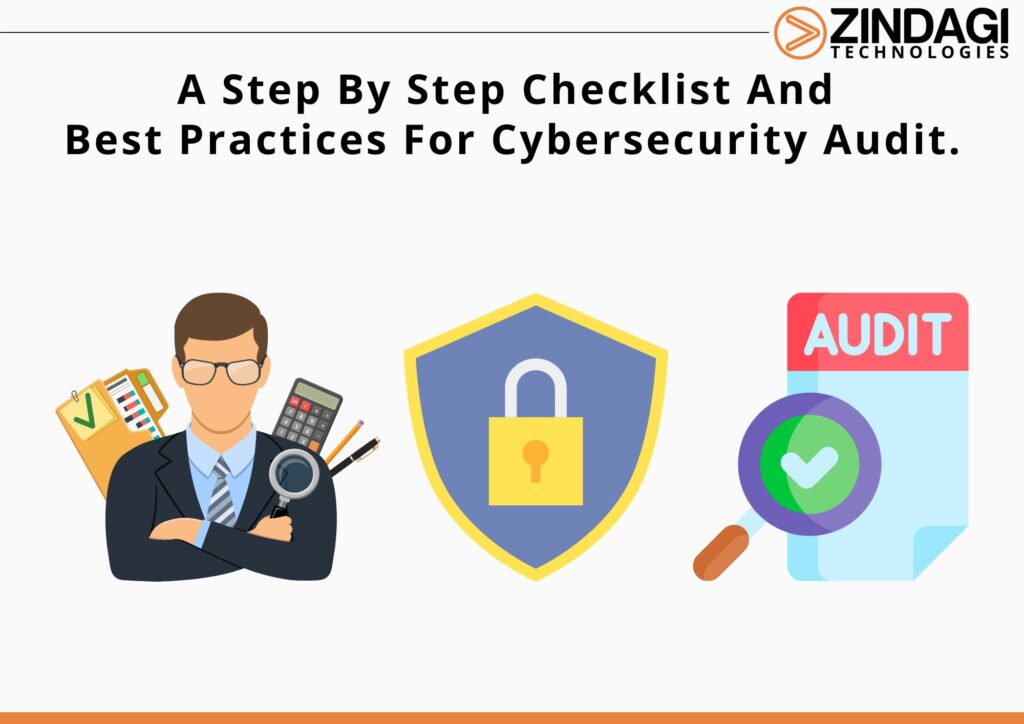A Step By Step Checklist And Best Practices For Cybersecurity Audit.
There are still organizations that have not been under the cybersecurity radar and are most vulnerable to risks. Digital innovation has increased the network complexity creating new loopholes in the network making it easier for cybercriminals to seep in. Having a Comprehensive Cybersecurity Solution will help organizations to guard their important files and documents. The loopholes if left unchecked then it becomes a free pass for cybercriminals.

The only way you can seal up the cracks of entry is by administering cybersecurity audits. Regular cycles of audit need to be conducted for gap identification and improvement of cybersecurity infrastructure. These audits should be in compliance with the law regulations. Effective monitoring is required by all organizations so their security posture is strong, and the network grows more and becomes less complex.
What Do You Mean By Cybersecurity Audit And How Often Should You Implement Them?
Audits are like a checklist in which every point has to be checked. In a cybersecurity audit, a proper security checklist is created which contains security policies, security mechanisms, compliances and regulatory measures also. When designing the checklist for a cybersecurity audit a proactive approach is needed in order to maintain dynamic threat management. Web application testing, network testing, cloud testing and running a VAPT audit are some examples of cybersecurity audits.
Every industry needs regular audits so that they can keep their organizations free from cyber criminals. Not just the audits are important, but the legalities and security frameworks should be followed regularly. Generally, an audit is required once or twice a year for any company, however, if you want to go up with the frequency then no harm in it. Another aspect you must apply is to educate your workforce about cybersecurity and what should they keep in mind so they should not fall into the trap.
How Does An Audit Differ From An Assessment?
An assessment is an on-demand evaluation of the security, but an audit will give you a view of if the controls are in place. When assessing the overall risk levels and cyberhealth of your firm, cybersecurity assessments are helpful. Moreover, third parties are not required to conduct cybersecurity evaluations.
What Are The Best Practices When You Are Preparing For The Cybersecurity Audit?
There are many steps in an audit and the more prepared you are the better you will be able to streamline things.
Data Security Policy Review.
Just like every other company, a security policy sets up the rules for handling sensitive data so that when the audit is done the policy is reviewed in regard to the same. Data confidentiality refers to who among the workers may access what data and to whom they may release it. How successfully your controls preserve data correctness is described by data integrity.
This also describes the precautions you take to make sure the data-handling IT systems continue to function in the event of an attack. Last but not least, data accessibility describes the circumstances in which data may be accessed by authorized individuals.
Consolidation Of Cyber Security Policies.
When you combine the cybersecurity policies then it amplifies the audit process. Some policies to include are:
NAC: Network access control – Is NAC placed? Is it segmented? Who is having access?
Remote work policies: what is the process of maintaining remote workforce security or people working from home?
DR and business continuity plans: if there is a breach then what policies will come into play? How will the business operation be erected back?
User policy that is acceptable: before accessing the IT assets, what terms and conditions must the employee agree to?
Network Structure Detailing Or Overview.
One of the main points is to identify the gaps in the security of a network. If you give an overview or a diagram to the auditor and highlight the ambiguities, then it becomes easy for them to work on it and gain a comprehensive view of the IT infrastructure. You should lay your network assets and details to create a network diagram.
Compliance Standards Review.
Reviewing the requirements of the compliance standards that apply to your company is vital before the audit starts. Once you’ve done that, be sure to tell your cybersecurity audit team about this information. Audit teams may tailor their evaluations to your organization’s needs by being aware of the compliance rules that pertain to your company. You can participate actively in the audit by answering any queries the auditors may have by studying your organization’s compliance standards.
Responsibilities List And Dedicated Security Personnel.
The auditor should know who is responsible for what and what role they play in a particular task. The auditors will have a better understanding, so they know the real scenario going on. The company should provide a list of all the employees who are part of a security team along with the required documents, so it becomes easy for auditors to take the right action.
Threats grow continuously and you have to buckle up in the audits and assessments so that your organization is safe and your IT infrastructure too. Having a Comprehensive Cyber Security Solution will not only help you in guarding the organization but will also help in strengthening the tools that you have already been using. Zindagi technologies will conduct a comprehensive audit for you with the help of their VAPT and cybersecurity audit team. You can place a call or message on 9773973971 or you can also email us to get in touch with us and we can plan out your cybersecurity audit. You can also follow us on LinkedIn and know about the latest blogs and technology talks.
Author
Shweta
Senior Executive, S&M
